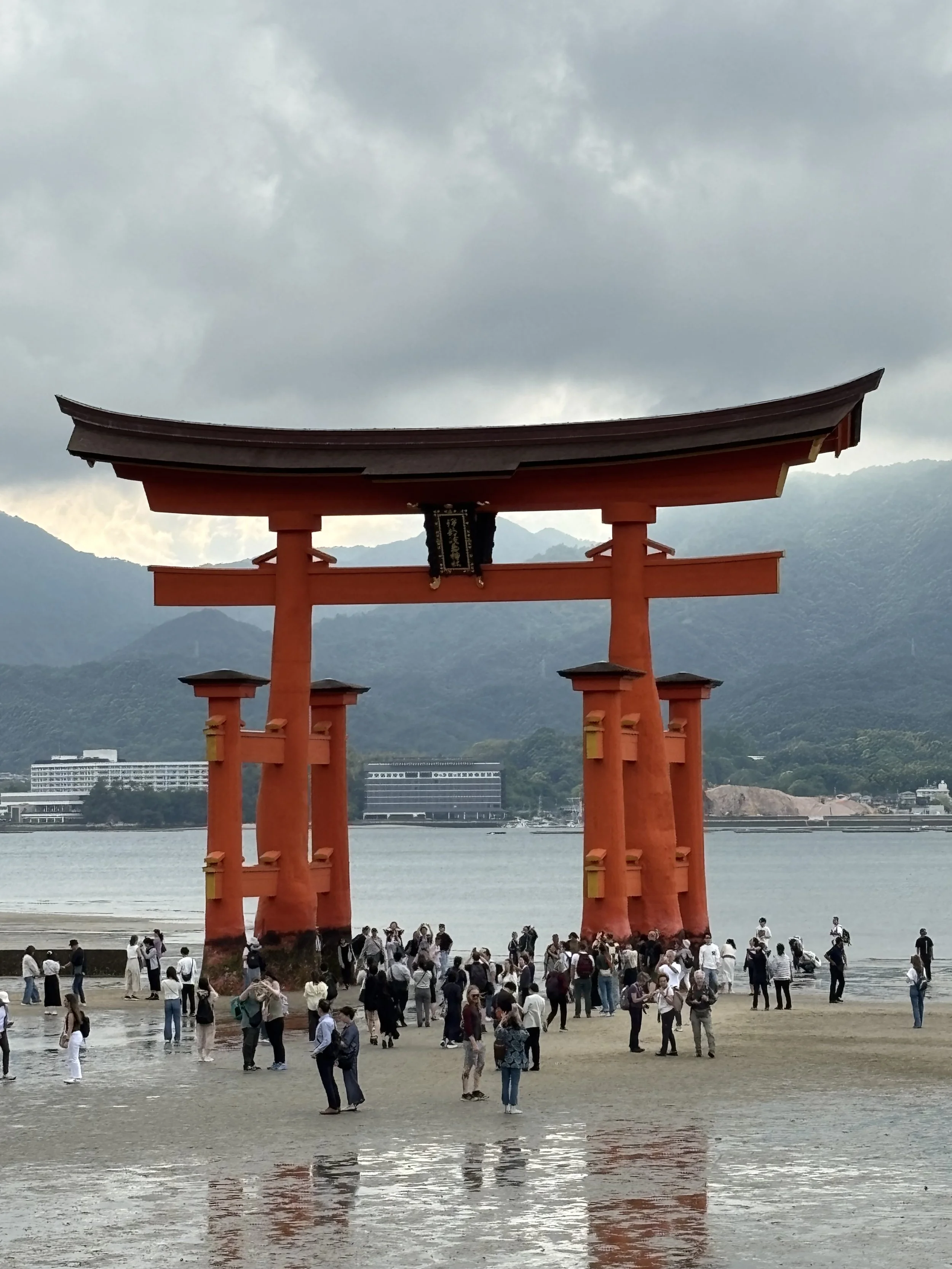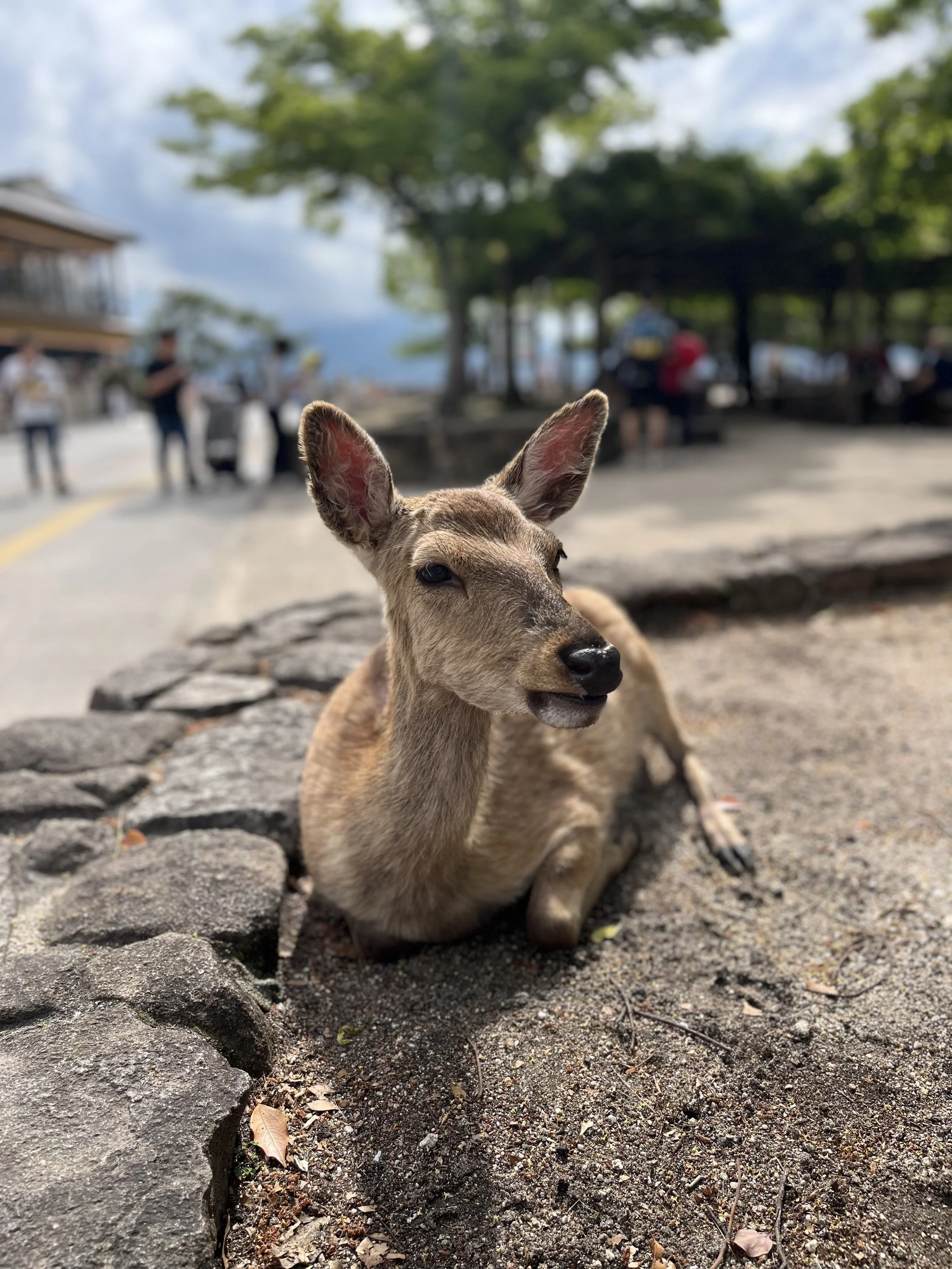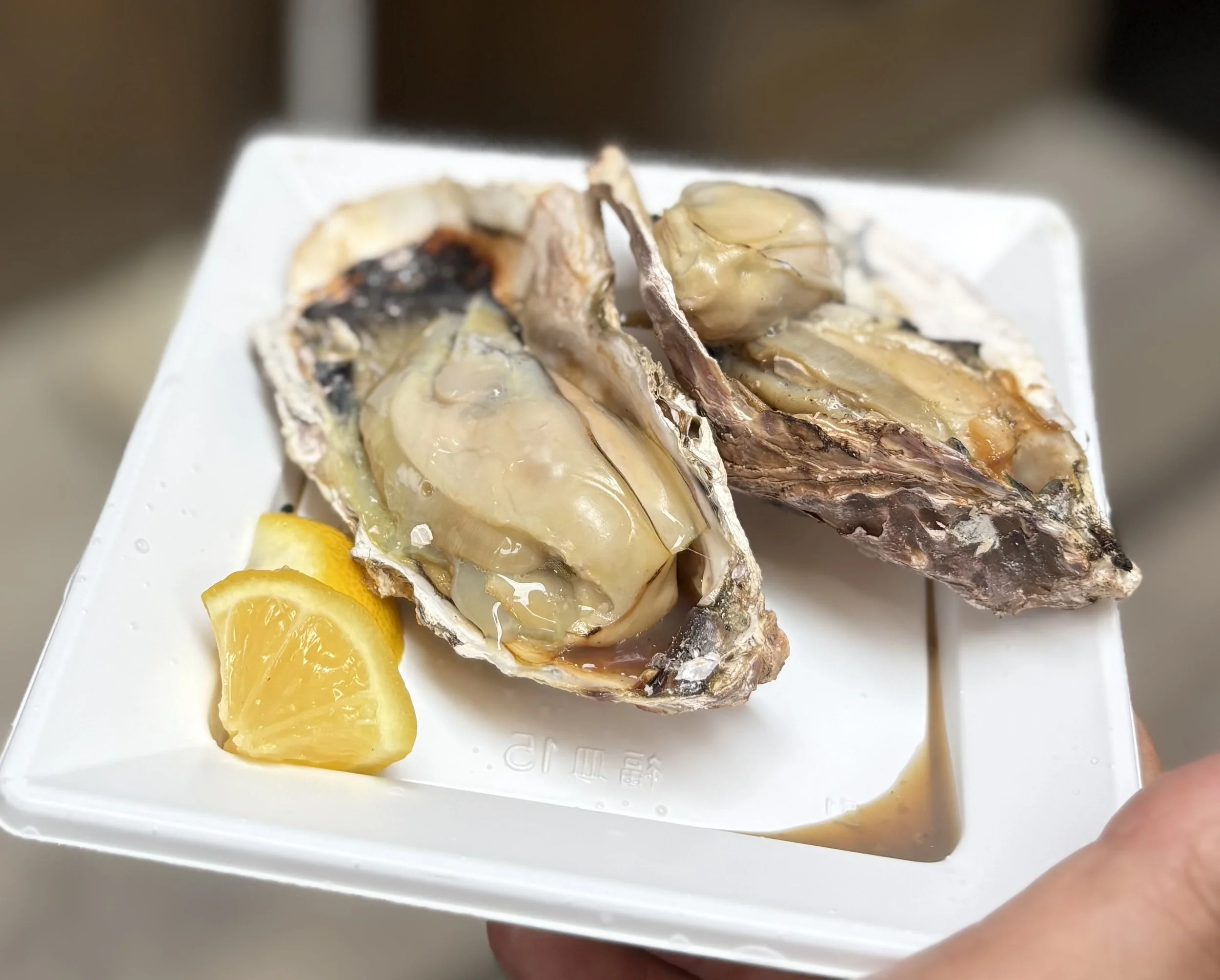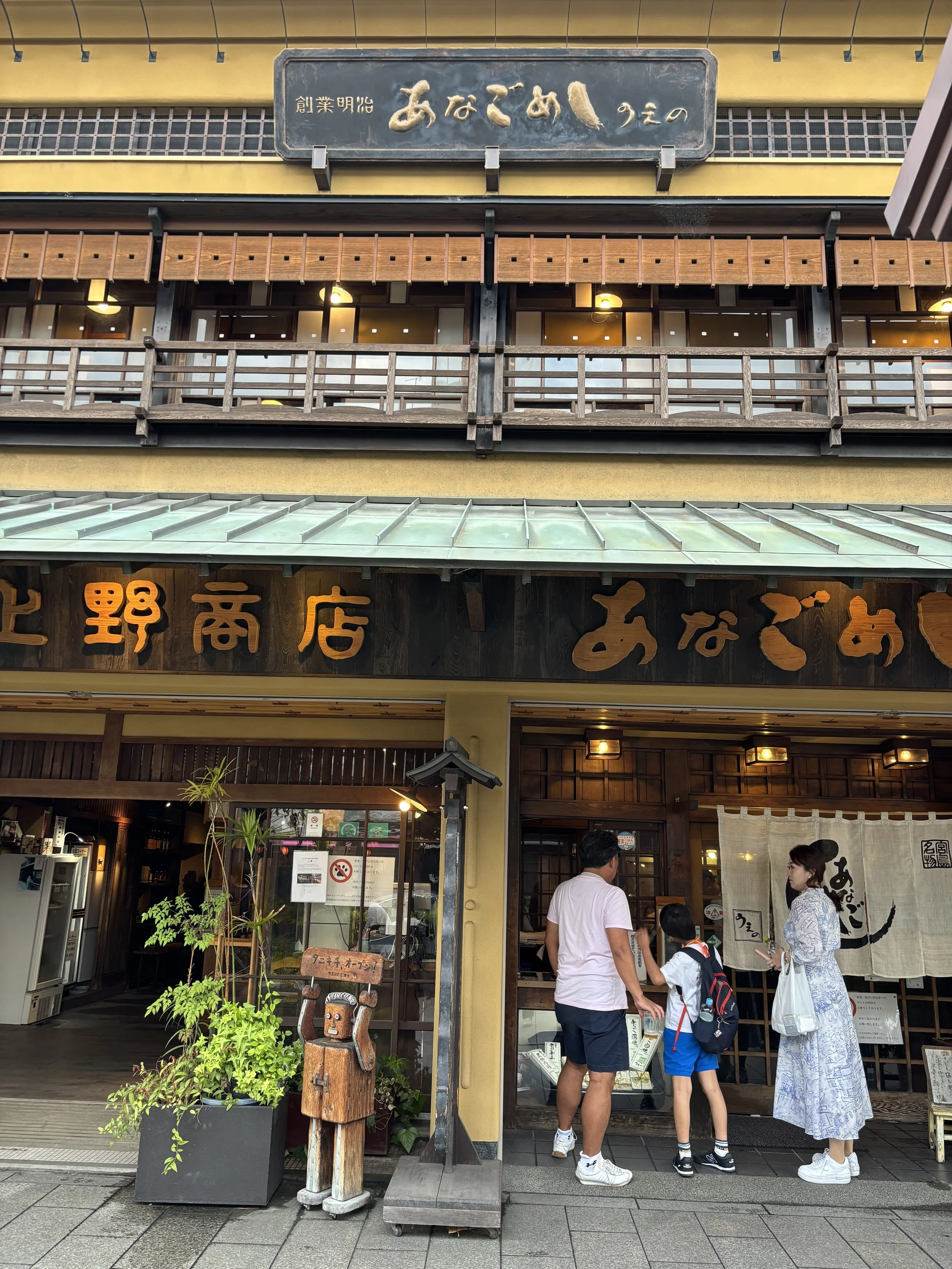Miyajima in Aki (安芸の宮島), one of Japan’s Three Most Scenic Spots- Japanese home cooking class in Tokyo
Itsukushima Shrine in Hiroshima prefecture- Japanese home cooking class in Tokyo
Miyajima, home to the UNESCO World Heritage Site Itsukushima Shrine, is often called the “island where gods dwell.” The secret behind this lies in its official name, “Itsukushima.” This name conveys the meaning of an island where one purifies the mind and body and serves the gods. In ancient times, the entire island was regarded as a sacred body inhabited by deities.
We can go from Peace Memorial Park to Miyajima by high speed boat in about 45 minutes.- Japanese home cooking class in Tokyo
History and Features
The shrine buildings of Itsukushima Shrine were transformed into their current grand, over-water style at the end of the Heian period by Taira no Kiyomori. This unique design, with structures built above the sea, reflects both religious beliefs and the aesthetic sensibilities of the era.
Six buildings, including the main hall, worship hall, and corridors, are designated as National Treasures, while 14 others are Important Cultural Properties. The shrine houses many other cultural assets, such as the Heike Nokyo Sutras.
The iconic Great Torii Gate, standing about 16 meters tall in the sea, is renowned as one of Japan’s three greatest torii gates. It appears to float on the water, especially at high tide, creating a mystical landscape.
The entire island of Miyajima has been considered sacred since ancient times, with much of its primeval forest still preserved today.
Itsukushima Shrine in Hiroshima prefecture- Japanese home cooking class in Tokyo
Deities and Faith
The main deities enshrined are the three Munakata goddesses (Ichikishimahime-no-mikoto, Tagorihime-no-mikoto, and Tagitsuhime-no-mikoto), worshipped as protectors of the sea, transportation, fortune, and the arts.
Amaterasu Omikami and Susanoo-no-Mikoto are also enshrined, and the island itself has long been revered as a place where deities are enshrined and worshipped.
Highlights
The scenic view of shrine buildings and the Great Torii seemingly floating on the sea is a signature sight.
National treasures and important cultural properties, such as the Heike Nokyo Sutras, are preserved here.
Traditional events, including the summer Kangen-sai (music festival), continue to be held.
Mount Misen and the island’s primeval forests, both part of the World Heritage site, are also must-see attractions.
Itsukushima Shrine in Hiroshima prefecture- Japanese home cooking class in Tokyo
Summary
Itsukushima Shrine is one of Japan’s most iconic shrines, visited by worshippers and tourists from around the world for its historical and cultural significance, as well as its mystical landscape harmonized with nature.
When we arrive on Miyajima, you are welcomed by deer.- Japanese home cooking class in Tokyo
Culinary Attractions of Miyajima
Miyajima is a leading tourist destination in Hiroshima Prefecture, known for its rich food culture. Visitors can enjoy a variety of local specialties, traditional dishes, and street foods.
Main Miyajima Gourmet Foods
Oysters: Miyajima is famous for fresh oysters, served grilled, raw, fried, or in rice dishes. Specialty restaurants like Yakigaki-no-Hayashi and Kakiya are especially popular.
Anago-meshi: Another specialty is grilled conger eel served on rice, a traditional dish dating back to the Meiji era. Each restaurant offers its own twist, such as steamed eel in ceramic boxes.
Momiji Manju and Age Momiji: The island’s signature maple-leaf-shaped sweet is a classic souvenir, with variations like fried and bite-sized versions popular for snacking.
Pettara Pottara: A grilled rice ball dish made with glutinous rice and oysters, perfect for eating on the go.
Anago Chikuwa: Chopped local conger eel mixed with white fish paste and grilled as a tube-shaped snack.
Grilled oysters-The highlight of our time in Japan is definitely the food! - Japanese home cooking class in Tokyo
The general oyster season in Hiroshima runs from October to March, with the best time for plump oysters being from December to February. Grilled oysters are often enjoyed with Hiroshima-grown lemons for a refreshing flavor.- Japanese home cooking class in Tokyo
Anago-meshi (conger eel rice) is a local specialty dish originating from Miyajimaguchi in Hiroshima Prefecture. It features flavorful and tender conger eel caught in the Seto Inland Sea, served over rice cooked with a broth made from the eel’s head and bones along with soy sauce. The dish is topped with grilled conger eel glazed in a sweet and savory sauce- Japanese home cooking class in Tokyo
Ueno’s Anago-meshi is a specialty dish offered by the long-established Japanese restaurant "Ueno," located in front of JR Miyajimaguchi Station in Hiroshima. Founded in 1901, the restaurant was started by Tanikichi Ueno, who began selling this dish as a train station bento at the then Miyajima Station (now Miyajimaguchi Station), giving it a history of over 100 years.
The dish features rice cooked in a soy sauce-based broth made from the bones and scraps of conger eel, which imparts a rich and deep flavor to the rice. On top of the rice, generous portions of freshly grilled natural conger eel are placed. The eel is grilled to have a crispy skin while maintaining a tender texture and rich fat flavor. This combination creates a savory and satisfying taste experience. The dish is available for dine-in, takeout, and even by mail order, making it popular as a gift as well.
Ueno’s Anago-meshi is renowned for preserving traditional flavors and is a must-try for visitors to Hiroshima and Miyajima.- Japanese home cooking class in Tokyo
Local and Seasonal Dishes
Kaki Gohan: Oyster rice, a local specialty enjoyed at home and in school lunches.
Yukibana-ae: A New Year’s dish made from okara (soy pulp) mixed with seafood and vegetables to resemble snow.
Chikara Mochi: A traditional sweet rice cake sprinkled with sugar, dating back to the Toyotomi Hideyoshi era.
Street Food Spots
Miyajima Yokocho in Miyajima, Hiroshima- Japanese home cooking class in Tokyo
Street food- Chikuwa (Tube-shaped Fish Cake) with Conger Eel- Japanese home cooking class in Tokyo
Japan’s Three Scenic Views
Japan’s Three Scenic Views are celebrated as the country’s most beautiful landscapes, each with unique natural and historical value.
NameLocationFeatures & Attractions
Miyajima (Aki no Miyajima)
Miyajima is a sacred island floating in the Seto Inland Sea, symbolized by the iconic Great Torii Gate of Itsukushima Shrine, a UNESCO World Heritage Site. The vivid vermilion gate, tranquil sea, and lush primeval forests together create a landscape reminiscent of Japan’s oldest landscape paintings. The entire island is regarded as sacred, offering a unique harmony of history, nature, and tradition. The panoramic views from Mount Misen are especially breathtaking, enveloping visitors in a mystical atmosphere156.
Matsushima
Located in Miyagi Prefecture, Matsushima is renowned for its bay dotted with over 260 small islands. The contrast between the pine trees and the blue sea is striking, inspiring poets and artists for centuries. The scenery of the islands floating on the calm sea changes with each season, and sightseeing cruises offer popular views. The area is also home to historic temples and cultural assets, blending nature and culture in a captivating way.
Amanohashidate
Situated in northern Kyoto Prefecture, Amanohashidate features a 3.6-kilometer-long sandbar that appears like a bridge to the heavens. The sandbar is lined with pine trees and stretches across the bay, offering spectacular views from nearby observation decks. Celebrated as one of Japan’s Three Scenic Views since ancient times, Amanohashidate is steeped in myth and legend. Visitors can walk or cycle across the sandbar, experiencing both natural beauty and historical ambiance.
MIyajima in Hiroshima prefecture- The Three Most Scenic Spots in Japan
Please book from here.











